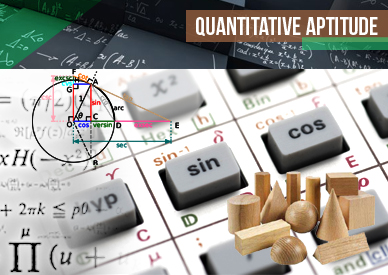Data Interpretation For SBI PO : Set -29

Data Interpretation For SBI PO : Set -29
D.1-5) A table showing the percentage of the total population of a state by age groups for the year 1991 is given below. Study the table carefully and answer the questions given below it.
1) Which one of the age groups listed below accounts for the maximum population in the state?
a) 16-25
b) 26-35
c) 36-45
d) 56-65
e) None of these
2) If the difference between the number of people in the age groups 46-55 and 26-35 is 11.75 million then the total population of the state is approximately.
a) 360.25 million
b) 427.27 million
c) 400.18 million
d) 460 million
e) None of these
3) Out of every 4,200, the number of persons below 25 years is approximately
a) 515
b) 746
c) 1260
d) 2005
e) None of these
4) There are 200 million people below 36 years. How many million people (approximately) are in the age group 56 to 65?
a) 12.72
b) 15.75
c) 30.07
d) 59.30
e) None of these
D.6-10) Study the following table carefully to answer the questions that follow.

6) Quantity of rice produced by farmer T is approximately, what percent of the quantity of rice produced by farmer R?
a) 53%
b) 48%
c) 56%
d) 45%
e) 59%
7) What is the average quantity of all the cereals produced by farmer T?
a) 265 kg
b) 240 kg
c) 259 kg
d) 245 kg
e) None of these
8) In the year, which farmer produced maximum quantity of cereals?
a) P
b) R
c) T
d) U
e) None of these
9) What is the respective ratio of the total quantity of maize, rice and jowar produced by Farmer U to the total quantity of wheat and bajara produced by same farmer?
a) 8:3
b) 40:17
c) 3:8
d) 17:40
e) None of these
10) What is the difference between the quantity of wheat produced by Farmer S and the quantity of maize produced by Farmer Q?
a) 200 kg
b) 240 kg
c) 220 kg
d) 210 kg
e) None of these








